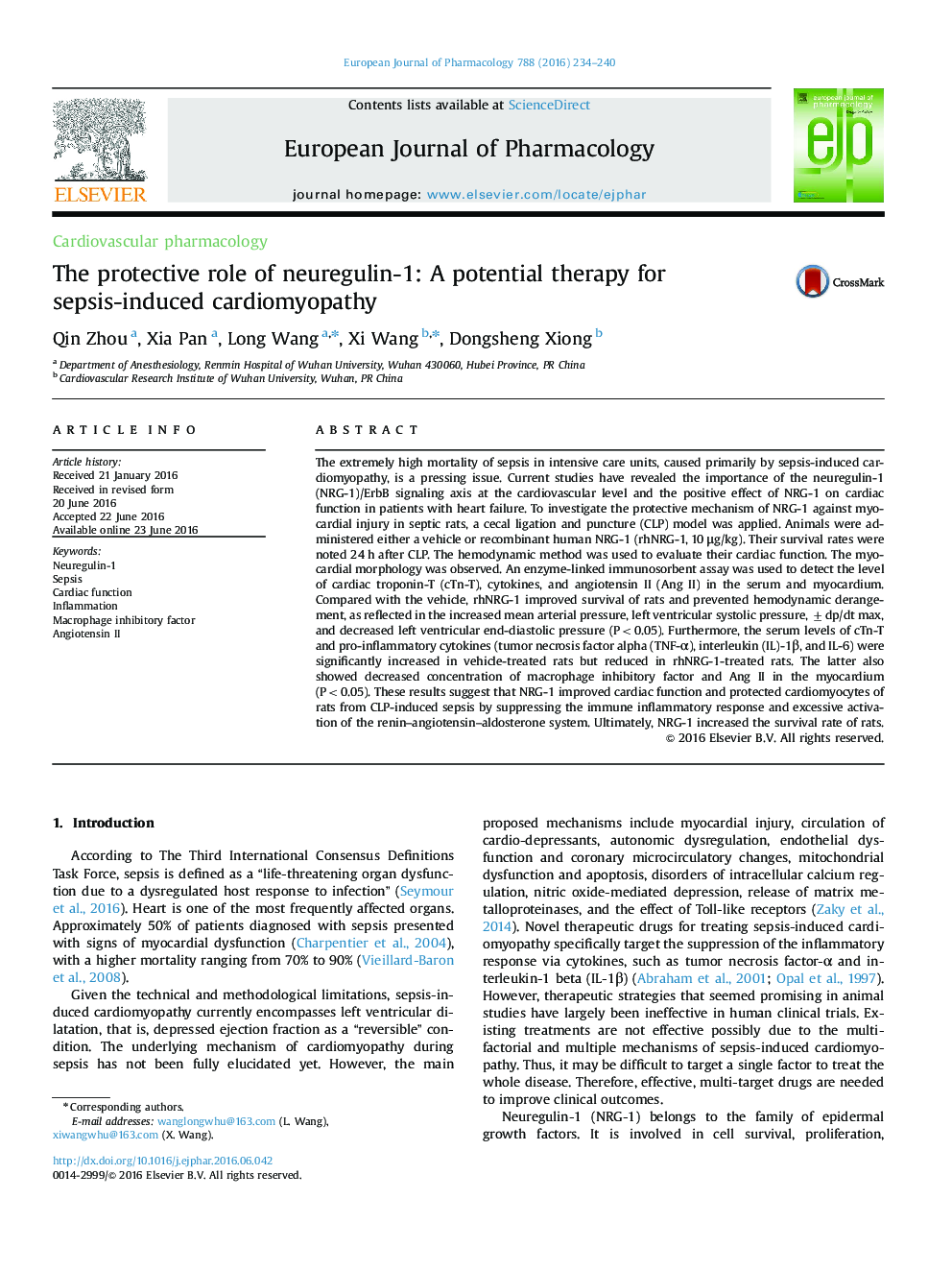| Article ID | Journal | Published Year | Pages | File Type |
|---|---|---|---|---|
| 5826668 | European Journal of Pharmacology | 2016 | 7 Pages |
Abstract
The extremely high mortality of sepsis in intensive care units, caused primarily by sepsis-induced cardiomyopathy, is a pressing issue. Current studies have revealed the importance of the neuregulin-1 (NRG-1)/ErbB signaling axis at the cardiovascular level and the positive effect of NRG-1 on cardiac function in patients with heart failure. To investigate the protective mechanism of NRG-1 against myocardial injury in septic rats, a cecal ligation and puncture (CLP) model was applied. Animals were administered either a vehicle or recombinant human NRG-1 (rhNRG-1, 10 μg/kg). Their survival rates were noted 24 h after CLP. The hemodynamic method was used to evaluate their cardiac function. The myocardial morphology was observed. An enzyme-linked immunosorbent assay was used to detect the level of cardiac troponin-T (cTn-T), cytokines, and angiotensin II (Ang II) in the serum and myocardium. Compared with the vehicle, rhNRG-1 improved survival of rats and prevented hemodynamic derangement, as reflected in the increased mean arterial pressure, left ventricular systolic pressure, ±dp/dt max, and decreased left ventricular end-diastolic pressure (P<0.05). Furthermore, the serum levels of cTn-T and pro-inflammatory cytokines (tumor necrosis factor alpha (TNF-α), interleukin (IL)-1β, and IL-6) were significantly increased in vehicle-treated rats but reduced in rhNRG-1-treated rats. The latter also showed decreased concentration of macrophage inhibitory factor and Ang II in the myocardium (P<0.05). These results suggest that NRG-1 improved cardiac function and protected cardiomyocytes of rats from CLP-induced sepsis by suppressing the immune inflammatory response and excessive activation of the renin-angiotensin-aldosterone system. Ultimately, NRG-1 increased the survival rate of rats.
Related Topics
Life Sciences
Neuroscience
Cellular and Molecular Neuroscience
Authors
Qin Zhou, Xia Pan, Long Wang, Xi Wang, Dongsheng Xiong,
